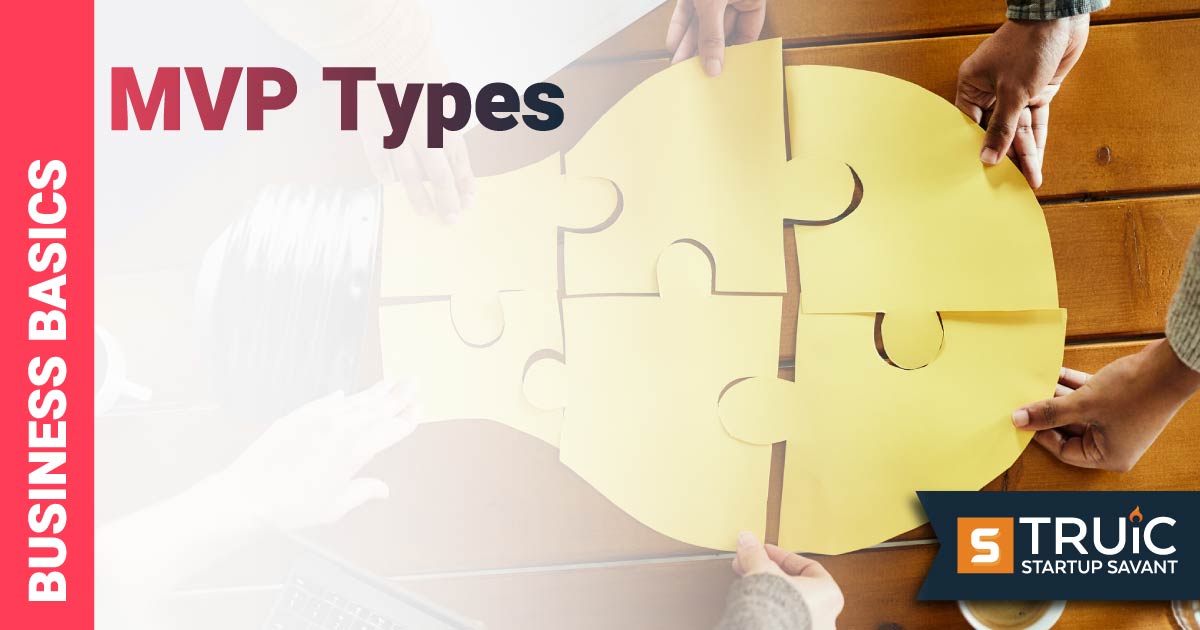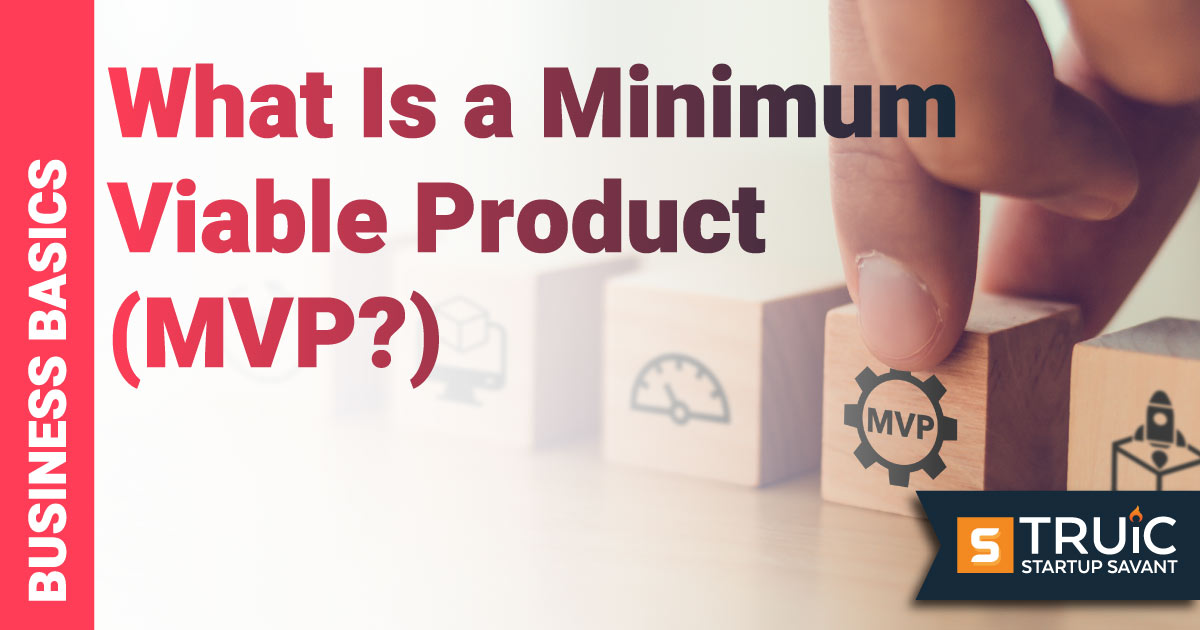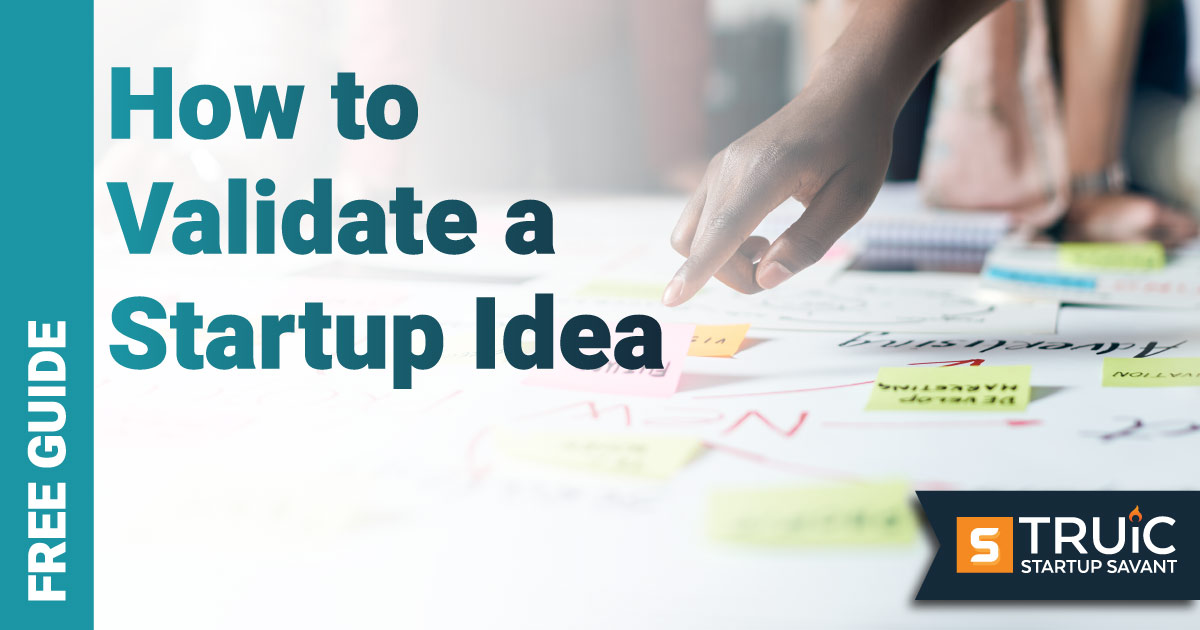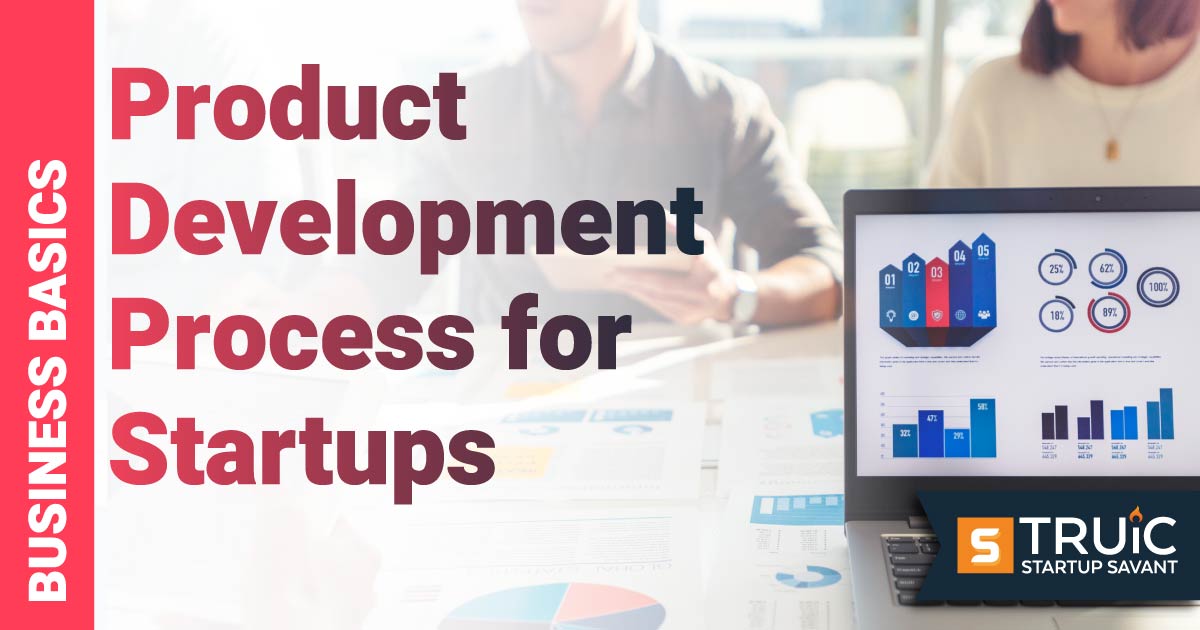9 Types of Minimum Viable Products

Last Updated: By Michaela Dale
Minimum viable products (MVPs) offer a way for startups to test their products before fully developing or launching their final version. This allows startups to validate their concept and generate valuable feedback before deploying more capital into building their product.
The type of MVP that is best suited for your startup depends on the product you’re creating, the type of feedback you are hoping to receive, and any constraints you may have. To get started, you should first understand the types of minimum viable products for startups and how they can benefit your startup.
Types of MVPs
When thinking about minimum viable products, the types of MVPs that can be created to validate an idea and learn can be broken down into two types: low-fidelity MVPs (those that do not yet have a functional product or service) and high-fidelity MVPs (those that have a functional product or service).
Low-Fidelity MVPs:
High-Fidelity MVPs:
Low-Fidelity MVPs
Low-fidelity MVPs are minimum viable products that do not yet have a functional product or service. The purpose of a low-fidelity MVP is to validate whether there are enough customers that would be interested in buying your product or service if you were to build your product or service idea.
1. The Email MVP
The simplest form of MVP is the email MVP. Drafting an email takes a lot less effort than making an explainer video, creating a landing page, or building a product or service.
If you have an email list, a contact list, or existing customers that are within your target market, then you can launch the simplest form of MVP by drafting some emails to see if your potential customers are interested in your idea.
With an email MVP, you will want to gather as much information as you can. Try including a call to action and experimenting with your pricing, messaging, and value proposition. If people are opening your email and following through on your call to action, then you might be onto an idea that customers want. But don’t stop there — make sure to follow up with some of your potential customers who clicked on your call-to-action to get more information about your MVP.
2. The Landing Page MVP
A landing page MVP is simply a landing page that lets you test your product or service ideas and messaging without ever having built a product or service.
Landing page MVPs are typically one- to two-page landing pages. The first page should describe what your product or service is, and the second page gives people the opportunity to sign-up to get more information or even allows them to attempt to “buy” your product or service. Those that do try to “buy” are often provided a message that lets them know the product is out-of-stock or isn’t available yet but asks them to provide their information to be the first to find out when it is available.
A landing page MVP is a great way to “offer” your product or service to actual customers, and it can help you decide if you should even build an initial version of your product or service in the first place.
To get the most value from your landing page MVP, make sure to capture as much feedback as possible. A “sign up” or email address alone doesn’t provide much validated learning. Use your MVP to test different messaging, different pricing, etc., and make sure to follow up by engaging in actual conversations with some of the customers that signed up.
3. The Explainer Video MVP
Another type of low-fidelity MVP is the explainer video MVP. The explainer video MVP describes how your product or service will work.
With the explainer video MVP, you don’t need to actually develop your product or service idea. You only need to create a video that demonstrates what your product or service is and how it will work. This allows you to measure interest and gather feedback before you spend anything at all on product development.
A great example of a successful startup that used an explainer video MVP is Dropbox. With a simple three-minute explainer video, Dropbox had 70,000 people sign up to participate in their beta almost overnight.
4. Marketing Campaign MVP
A marketing campaign MVP validates customer interest and demand through a targeted campaign. Plus, it may help narrow down the startup’s target market by demographic and produce valuable feedback to finetune the product or service.
As with any marketing campaign, this MVP starts with a major selling point of the product or service with the goal of conveying the value proposition to customers. If your main objective is to test how your product or service will be received by customers, generate feedback, and refine your marketing strategy, this is a valuable MVP to test out.
A great example of a marketing campaign MVP is Airbnb. The company created a Craigslist ad, inviting conference attendees to rent out air mattresses inside the founder’s apartment. When the ad was successful, the founders had the validation they needed.
High-Fidelity MVPs
High-fidelity MVPs are minimum viable products in which you actually build a version of the product or service. The purpose of a high-fidelity MVP is to validate that you are actually solving the problem impacting your users or customers.
5. Wizard of Oz MVP
The Wizard of Oz MVP is a high-fidelity MVP in which you create the illusion of an automated, functional product or service, but all of the work is actually being done by a human.
With a Wizard of Oz MVP, the customer is led to believe that the entire process is automated. However, on the back end, everything is carried out manually. In this way, you can easily create a prototype of how your product or service would work with a fully developed product. This allows you to validate the market response to your product or service before creating anything at all.
A great example of a Wizard of Oz MVP is the shoe giant Zappos. Nick Swinmurn launched Zappos with a simplistic website featuring pictures of shoes from his local mall. When customers would place an order, he would then go to the mall to purchase the shoes to mail to his customers. While it appeared that customers were interacting with a fully automated system, everything behind the scenes was carried out by a real-life human being.
6. Concierge MVP
Another type of MVP that you may want to consider is the concierge MVP. The concierge MVP is similar to the Wizard of Oz MVP, in which all the work is performed manually, but with the concierge MVP, there is often no illusion of automation.
Take, for example, Manuel Rosso’s MVP for Food on the Table, a service that generates recipes and creates shopping lists tailored to each customer’s individual wants and needs. When Rosso launched his MVP, he hadn’t even built a website. Instead, he sold customers his services for $10 a month and then created his recipes and shopping lists as he followed them around the store. While this was highly inefficient, it allowed him to validate his idea while getting feedback from actual customers.
One big benefit of the concierge MVP is that you get to interact with customers when they use your product or service. This allows you to gather validated learning insights before you even begin to build your product or service.
7. Single-Feature MVP
The single-feature MVP is an MVP that focuses on one core feature that solves a problem their customers or users need. This does not mean that this core feature is the only feature that is developed with the MVP, but it should be the focus of the MVP, and all of the other basic features that might be required are secondary to developing an MVPs core feature.
For example, Spotify started as a single-feature MVP. The single feature that Spotify focused on was streaming music. Of course, there had to be a number of other features, such as selecting music and controlling the volume, that Spotify also had to incorporate into their product, but their focus, the value they were going to provide, was the streaming feature.
Single-feature MVPs are useful to validate your product or service’s core feature and provide you with the information necessary to develop future features.
8. Piecemeal MVP
Piecemeal MVPs involve testing different aspects of your product or service incrementally to validate and generate feedback on each one. This is a helpful tool for validating different components of your offering and refining aspects that may still need to be improved upon.
To create a piecemeal MVP, you will need to break down your product or service into several smaller components that are able to stand alone as a testable product, such as features. Then, test each individual component with early adopters.
One valuable example of a piecemeal MVP is Instagram. The social media platform originally launched with only one function: to share photos. Once this piece was tested and validated, the platform introduced additional features such as filters.
9. Pre-Order/Crowdfunding MVP
As the name may suggest, pre-order MVPs or crowdfunding MVPs allow you to test your product’s demand before it is fully developed or launched by creating only the amount of products that are ordered by crowdfunding participants or pre-orderers.
Not only does this allow you to gauge interest in your product, but it also prevents you from spending capital creating products before you have a guaranteed buyer. This may help you generate much-needed revenue to grow your startup rather than taking on more debt to bring the product to market initially.
A great example of this MVP type is Oculus. The company was able to generate more than $2 million in revenue before its VR headset was launched through pre-order sales alone.
Choosing the Right Type of MVP for Your Startup
The type of MVP that is best suited for your startup is dependent on the needs of your business, the type of product you’re offering, and the feedback you’re hoping to get from launching an MVP.
For example, if you have a partially developed product that you’re looking for a guaranteed customer for before finishing the release, crowdfunding or pre-order MVPs may be your best bet. Alternatively, if you are looking to validate your concept before dedicating capital to developing the product, another MVP type, such as Wizard of Oz, may better suit your needs.
Overall, the biggest consideration is the type of support your startup needs to validate and refine the product. You then need to consider any constraints, such as budget and timeline. Once you have established your startup’s MVP needs, you can choose the type to best support its growth
FAQs
What is a minimum viable product?
A minimum viable product or MVP is a rudimentary version of a product that allows the business to test the reception of the product, generate valuable feedback, and gather data to inform how they can refine and improve their product.
Why are minimum viable products important?
Minimum viable products (MVPs) generate valuable customer feedback, allowing you to refine your product, obtain information about your target market, and support the full development and release of the product.
How do you build a minimum viable product?
To build a minimum viable product (MVP), you first need to determine the type of MVP that is right for your startup. This begins with determining whether your startup is better suited to a high or low-fidelity MVP.
Once you’ve chosen the best MVP type that will achieve your startup goals, your next step is to build your MVP. Depending on the type you’ve chosen, this may entail creating a landing page, manually completing tasks that will eventually be automated, or running a crowdfunding campaign.
You can get some extra support by hiring an MVP development company. Check out our curated list.
What are some minimum viable product examples?
Many wildly successful and widely known companies have used various MVP models to generate feedback on their products. A few minimum viable product examples include Airbnb, Dropbox, and Zappos.


